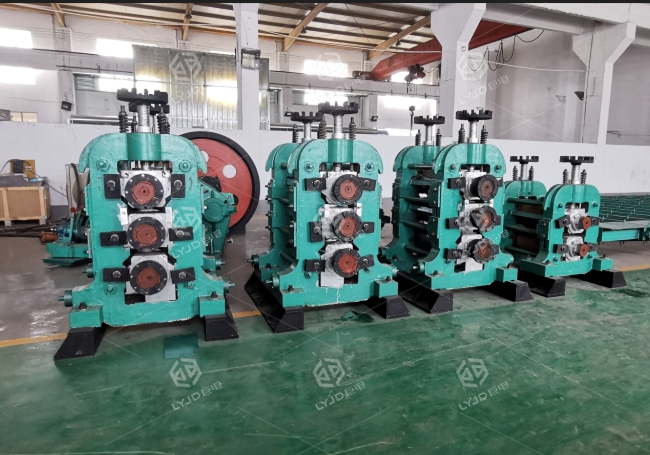Rolls are the most commonly used components on rolling mills. Today we are going to learn about the hardness change and residual stress of the roll.
It is difficult to obtain correct hardness readings while the roll is in operation, and the linear relationship between hardness and other properties is always limited to some extent. This is because the composition and structure of the workpiece vary widely. Therefore, hardness readings are more confusing than when the rolls are rolling. There has always been a discrepancy in the perception of hardness readings by roll manufacturers and roll users.
Only surface hardness can be measured non-destructively on rolls. This two-dimensional measurement is often considered a representation of the three-dimensional volume behind the surface. But in the roll, the hardness gradient and the time-temperature-transformation curve due to the macroscopic and microscopic changes caused by casting and heat treatment. Further hardness depths are affected by composition and heat treatment method.
In addition, the roll material is very hard and therefore greatly affected by work hardening and tempering. Hardness has an effect on wear resistance. However, the higher the hardness, the better everything is, which is also not true. Other parameters have a greater impact on roll performance, such as composition, microstructure and residual stress.
Furthermore, in the case of a roll, the hardness of the roll surface varies. Because the surface area of the roller is very large. After some rolling with rolls in a rolling mill, hardness non-uniformity may increase because the center portion of the rolls in contact with the hot material being rolled tempers, resulting in a reduction in hardness.
Rolls usually have residual stress.
During the manufacturing process, the workpiece is affected by various factors such as processes.
When these factors disappear, the action and influence of the workpiece cannot be completely eliminated, and this residual action and influence is the residual stress.
When there is no external factor acting on the object, the residual stress can be inside the object and keep the balance.
These residual stresses are two-dimensional on the surface and three-dimensional on the volume. At the workpiece surface, the radial stress is zero, and the longitudinal stress is also zero at the barrel edge.
Stresses in excess of the material strength of the roll can lead to spontaneous breakage of the roll. If the longitudinal stress is too high, the fracture can be perpendicular to the axial direction, and the residual stress has a great influence on the strength of the roll.
The compressive strength increases fatigue strength, reduces crack propagation, and reduces shear stress and work hardening on the roll surface.
Tensile residual stress can cause roll breakage. The compressive and tensile residual stresses in the roll compensate each other in the cross section of the roll. The correct level of residual stress needs to be controlled in the roll.
Welcome to Luoyang Judian to learn more about steel rolling production.

Please send us your request and we reply to you with in 24 hours.
Submit Request